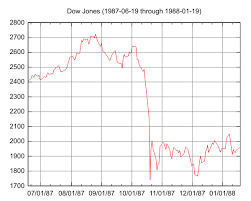Understanding the Dow Jones Stock Markets and Their Trends

Introduction
The Dow Jones Industrial Average (DJIA) stands as one of the key indicators of stock market performance in the United States. Tracking 30 major publicly traded companies, the DJIA represents a significant measure of market health and investor sentiment. Recently, the fluctuations in this index have highlighted the underlying dynamics of the economy, affecting both individual and institutional investors alike.
Current Trends in the Dow Jones
As of October 2023, the Dow Jones stock market has been witnessing notable volatility, largely driven by a combination of interest rate projections and geopolitical events. The Federal Reserve’s decisions regarding interest rates have created waves in investor confidence, particularly as the economy grapples with inflation challenges. Analysts report that the DJIA experienced fluctuations of nearly 500 points within a single trading week, showcasing the resilience and challenges faced by investors.
Noteworthy companies that influence the Dow’s performance include tech giants like Apple and Microsoft, as well as industrial stalwarts like Boeing. Recent earnings reports have revealed mixed results, where tech companies continue to achieve solid growth in a digital-first economy, yet traditional manufacturing companies express concerns regarding supply chain disruptions and labor costs.
Recent Events Impacting the DJIA
In recent months, external factors such as rising oil prices and ongoing geopolitical tensions around the globe have impacted market behavior. The increased cost of oil affects transportation and consumer goods prices, further complicating the inflation situation. Moreover, developments such as trade agreements or tensions with foreign markets continue to contribute to the volatility of the Dow Jones.
Conclusion
In conclusion, the Dow Jones stock markets play a pivotal role not only in reflecting the performance of select U.S. companies but also in signaling the broader economic climate. As we move towards the end of 2023 and beyond, investors should stay alert to ongoing economic indicators, including employment rates, consumer spending, and Federal Reserve policies. The ability to navigate these changes will be crucial for investors looking to maximize their portfolio performance in an increasingly complex market environment.









